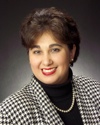4 Common Geriatric Headaches and Their Significance
By Dr. De Leon
What does it mean if someone suffers from a headache for the first time in their twilight years?
First, I will talk about Migraines. What is a migraine?
This is a specific type of painful and unpredictable neurological (nervous system) disorder that causes unilateral headaches in approximately 36 million people in the US.
Migraines are more common than diabetes and asthma put together affecting about 10% of population.
These are typically triggered by stress, loud noise, lack of sleep, fasting, hormonal changes in women, medications (especially those used for Parkinson’s disease), certain foods which are unique to the individual but one common food is chocolate and caffeine (although in general these are also treatments) as well as alcohol especially red wine; but the biggest one is weather changes and low barometric pressures.
These can mimic stroke like symptoms at times. But do elderly people get migraines?
The answer is YES! However, only less than 5% of those over 70 years of age have actual migraines.
Most migraine headaches are more common in women than men. The disparity is of course greatest in the age group under 34 followed by those over the age of 75. Of note is that there is no NEW occurrence of migraines in the elderly population. All of the individuals who experience migraines have had migraines all of their lives. However, when those older than 65 have new onset of headaches we must be alert because the risk of having a headache as a harbinger of something more serious is tenfold compared to a new onset of headaches in young people.
For those who have had migraines their entire life …as they age migraines change in character…they may have less of a headache, only present in about 50% of the older population. But, if they experience an actual migraine headache it is usually very mild.
For those that experience true migraines aside from having a mild headache, they tend to have more sensory phenomena like visual disturbances such as loss of vision (tunnel vision, or peripheral field loss on both sides unlike a stroke which affects only vision on one eye), numbness and tingling, heaviness over an extremity, vertigo, hearing loss, clumsiness, problems with speech, concentration, naming objects, and even ear pain.
The most common cause of dizziness and vertigo among the elderly with history of migraines is a known as a vestibular migraine. As you can imagine most of these symptoms are similar to those of a stroke so it is imperative that the first time any of these symptoms occur as you age, especially if no headache accompanies symptoms, that you seek immediate medical attention…
The one thing to distinguish a migraine from a mini- stroke (transient ischemic attack – TIA), is gradual buildup of symptoms rather than sudden. Also duration helps to distinguish between the two. The TIA’S usually last less than 15 minutes while migraines can last hours to days.
Migraines are typically treated with two types of medications; abortive therapy like Esgic and/or preventive medications like Topamax, Elavil, and Depakote among other antidepressant and anticonvulsant medications depending on frequency, duration, and severity of headaches.
Another common cause of geriatric headache is one related to trauma.
The incidence of at least one fall a year in those over 65 years of age is about 30%. This results in about 1% of subdural hematomas (brain bleed) as a cause of headaches related to injuries. This type of headache can result even from mild head injuries such as an insignificant bump. This can also occur even if no loss of consciousness transpires.
The incidence of chronic subdural is greater in this population due to generalize brain atrophy many possess due to aging or dementia. The atrophy in the brain allows for blood to accumulate for longer periods of time before the blood pooling in the brain becomes symptomatic. Elderly people are at risk of this due to frequent falls and frequent use of anticoagulants (blood thinners). This type of headache is extremely important to recognize since this problem occurs in nearly 90% of those with head trauma. They usually present with mild to severe all over headache nausea, and vomiting. If not treated this could be a life threatening event.
But key to these headaches is they are worsened by movement, coughing, & straining. Must be hyper vigilante with people suffering from dementia because they can’t give history of head trauma plus are more likely to develop chronic bleed in the brain. This type of headache requires surgical treatment most of the time.
Trigeminal neuralgia also known as tic- doloroux is another common type of pain in the elderly which can present as a headache. This pain is mostly on one side of face described as severe throbbing, shooting, electrical like sensation which comes in waves lasting only seconds at a time…usually involves lower part of face but can involve upper part of face including the eye. In rare cases approximately 5% of the time, the pain is due to a brain tumor. Therefore, sometimes it may be necessary to obtain a MRI of brain.
Tic -doloroux are typically treated with Botox (this is great for those who are on lots of medicines as well since effect is local and no systemic side effects usually lasting about 4 months). Other common treatments are seizure medications like Tegretol; while in rare instances of intractable pain or tumor presence surgery is needed to stop severe pain.
Lastly, another type of headaches is caused by herpes virus. Who among us has not heard of shingles? We are all well acquainted with the devastation it can cause during an outbreak. After the shingles subsides a person may develop post- herpetic neuralgia – PHN– (fancy word for nerve pain after the vesicles have crusted over and outbreak has subsided due to virus remaining in the nerve root).
Therefore, PHN is define as the persistence of pain more than a month after outbreak. This type of pain is extremely common as we age. The occurrence it’s almost a linear one where 50% of those over 50 is at risk of developing this problem increasing dramatically as we age to 80 % of those over 80 years of age. The shingles is also unilateral and although typically involves the trunk of our body it can frequently affect the face. The pain is not unlike the trigeminal neuralgia described above especially when herpes zoster affects the face, as the pain is in the same nerve distribution. However, unlike the tic -doloroux, PHN tends to affect the ophthalmic branch (eye region) in 23 % of the cases.
Unfortunately pain can last for more than a year in 20% of those affected. Because incidence is so high in the elder population especially in those who are immunocompromised or have diabetes, I highly recommend getting the shingle vaccine if you are over 65 years of age to prevent. However, should you still get this the treatment consists of high doses of steroids, along with antiviral medications such as Valtrex at the onset of singles. For the pain, we recommend anti -seizure medications such as Neurontin, and antidepressants just like the other type of headaches with the exception of subdural hematomas.
Hence, if you or your elder loved one experiences headaches especially if they are new to the patient, you must carefully consider the above and seek immediate attention.
Photo by S. Sund
Source:
http://www.webmd.com/migraines-headaches/geriatric-headaches?page=5




